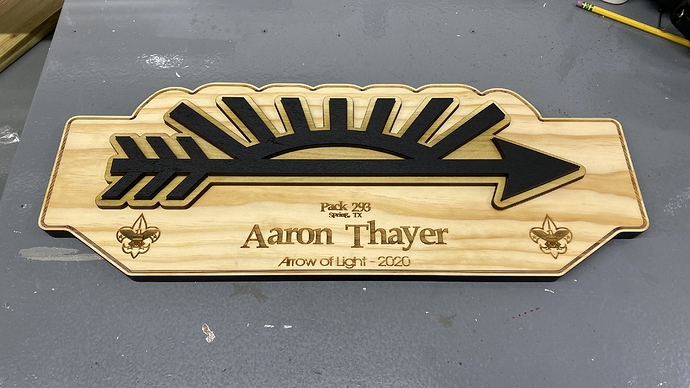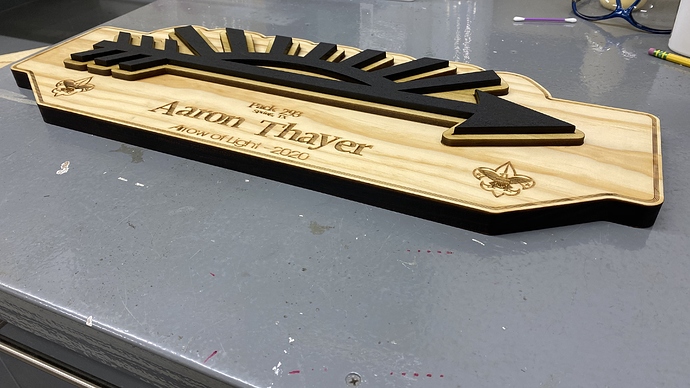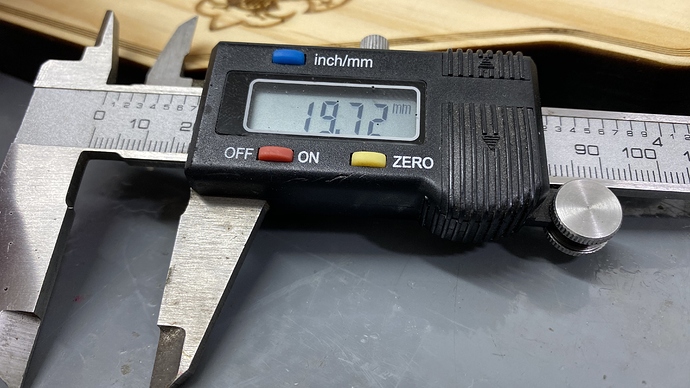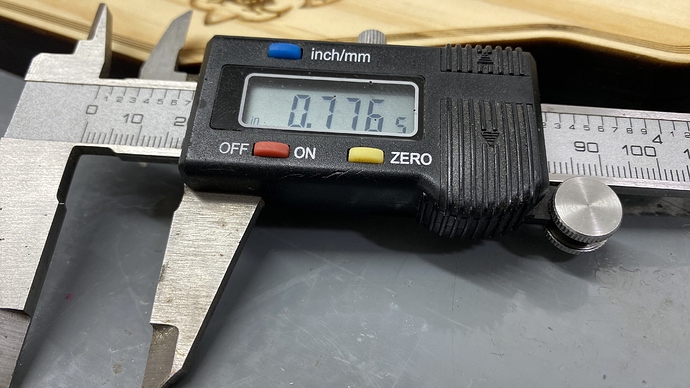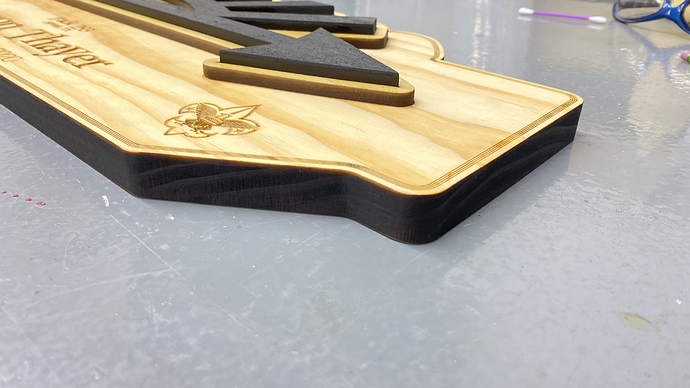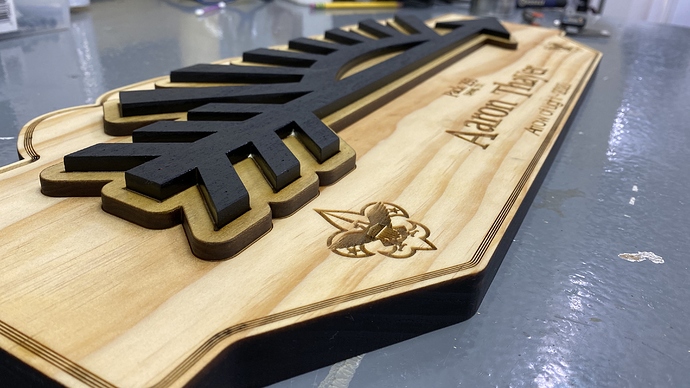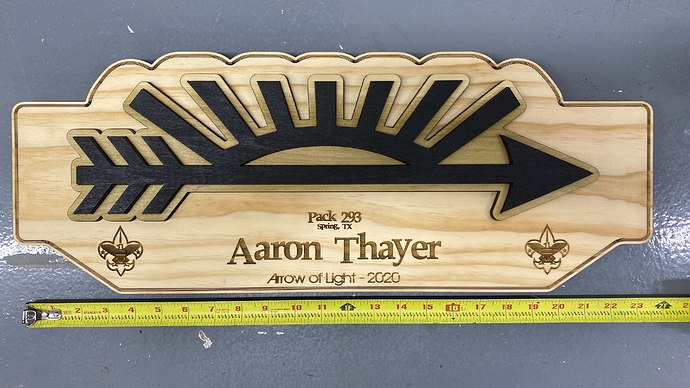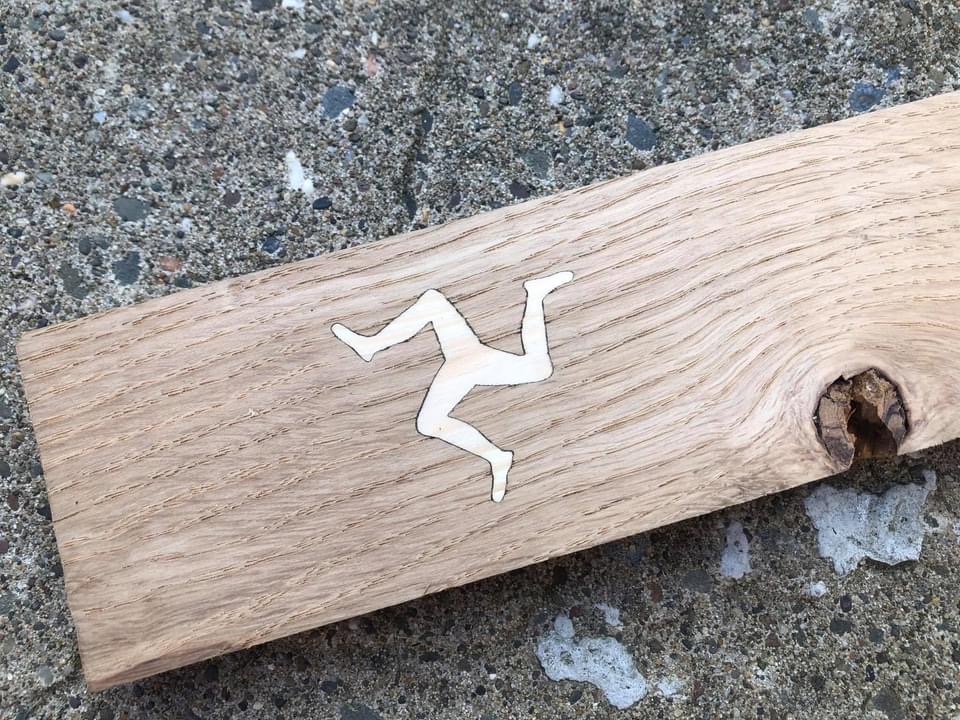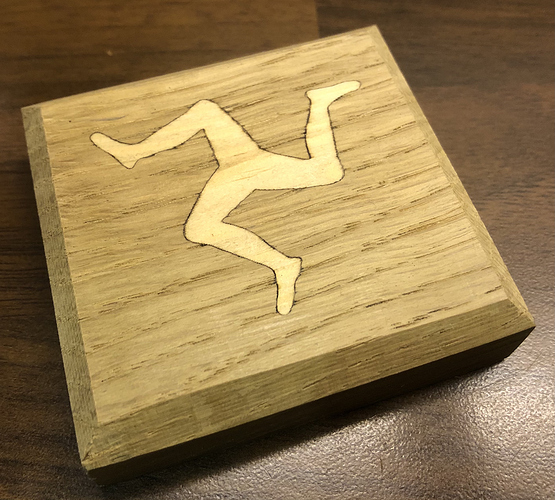I’ve been asked to make these for a local pack. Using LightBurn I created the design (file attachedArrow_Of_Light_Sample.lbrn (1.6 MB) ). Pictured is the prototype on 3/4 inch (20mm) prime solid pine  . Layered to make the arrow and light beams is 1/4” poplar.
. Layered to make the arrow and light beams is 1/4” poplar.
That looks great. What laser do you have? I’ve not tried any 3/4 wood on our 100w co2 Ruida.
That looks really nice! Great job and thanks for sharing 
Thanks. Info on my machine within this post in a couple of places:
I think it looks great too. Although, the letters seem to be off a bit on text.
Maybe my 54 year old eyes just aint right no more. And that could be.
That’s intentional, the lettering. The fonts were specifically chosen for their organic properties.
Hi all. Its that time of year again and I am making the plaques for my den. I took inspiration from Stroonzo’s post along with a few others. I happen to have a CNC unit that I added a diode laser to, so instead of having the arrow stand out, I made an inlay of it.
The prototype was made from Oak and Poplar to test everything:
Decided on mahogany and alder for the finished ones
The finish helped things pop out great
Used Lightburn to do the overall layout. Exported the SVG file to my CAM software to cut the inlay parts. That workflow turned out great. I can design both laser and carving in one tool, export the stuff to carve to the not so nice tools and carve it.
I’m not sure I understand the first photo. Did you burn away all the ‘outside’ wood to create a raised layer for the inlay?
That’s correct. It was just an experiment as I only had some oak and a piece of softwood. I clean it all up a bit afterwards and it now looks like this.
Yes sir. I’ve done inlay with both the laser and CNC router. As you’ve probably experienced, the depth of cut is slightly unpredictable using the laser due to variations in grain density. I prefer to keep the pocketing work to the CNC machine and find use of either the laser or CNC for the in-fill.
If you overcut on both depths then you can plane down the excess inlay after the fact. The thing I like about this method is that you can (theoretically) get sharper corners than you could with a router.
Update: A hybrid approach might be most effective. Use the CNC router to clean out most of the pocket and the area around the perimeter of the inlay and then use the laser only for the detail work.
Hmmmm… need to work on the jigs for reliable and accurate alignment, but that’s just… you know, really simple 
Update to your update  …
…
Another alternative approach to using the laser exclusively for pocketing and inlay is to layer the material. In other words, two pieces of half inch material makes for a finished product 1" thick if you want a solid back. You could also opt for no back if seeing the inserted inlay from behind wouldn’t be an issue.
Agreed. Many ways to skin that cat.
IMO inlay in a solid material has an ‘intrigue’ that you can’t get with layers. It begs the question, “How did you do that?” much more (eg, my first question on this matter  )
)
@Ash what type of laser do you have? I just have a little diode laser and I’ve not had any luck actually burning away enough wood to make the inlay.
I like the way it turns out, the black border around it helps to make it stand out in a really nice way.
I have a few lasers, the three legs was done on a Aeon Nova 10 with a 100w tube
Hi @Stroonzo, I’d love to use your file to help out a friend’s troop, but I unfortunately am only familiar with AI. Is there any possibility I could trouble you to export the file as an svg? I’d be happy to pay you for your troubles. Thank you so very much in advance!
Signed, a technically challenged fan

It is a LightBurn file on a LightBurn forum. 
Hi Jeff, I understand that… I was simply trying to help a friend out. Sorry to trouble you.
Load the lightburn file, then under the FILE menu, choose export, and export it as an SVG for your friend.
